#King afonso v of portugal
Explore tagged Tumblr posts
Text




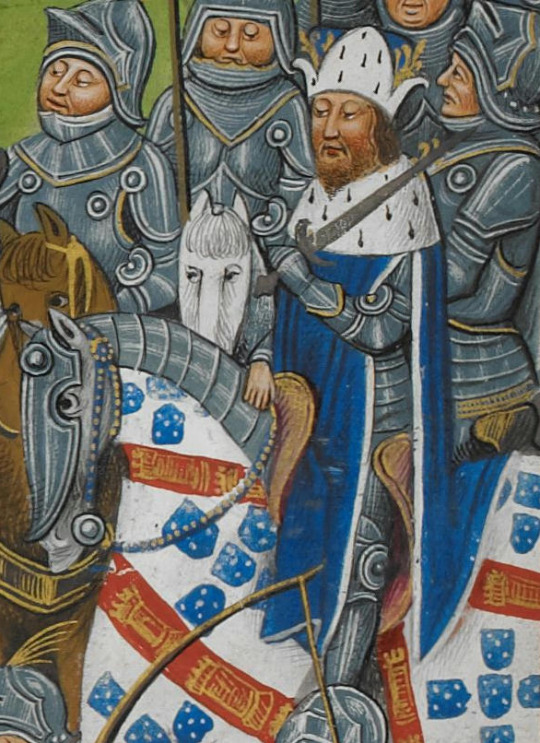

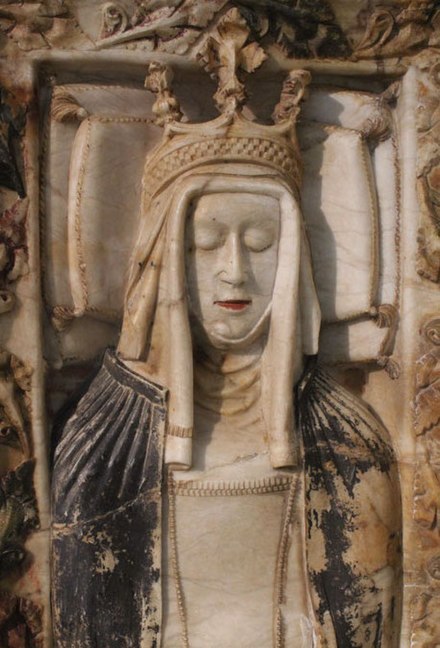


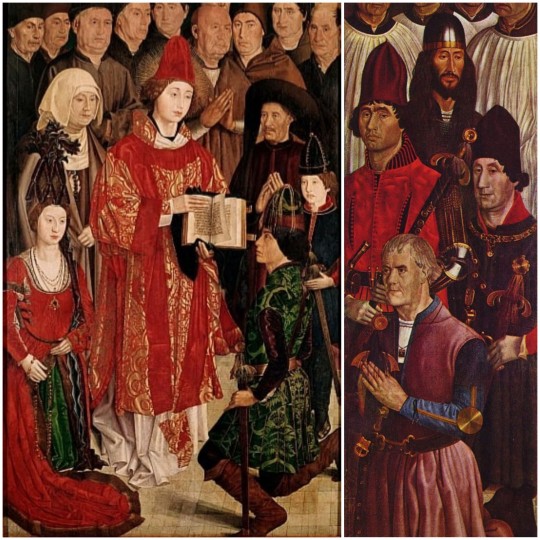
The Bastard Kings and their families
This is series of posts are complementary to this historical parallels post from the JON SNOW FORTNIGHT EVENT, and it's purpouse to discover the lives of medieval bastard kings, and the following posts are meant to collect portraits of those kings and their close relatives.
In many cases it's difficult to find contemporary art of their period, so some of the portrayals are subsequent.
1) John I of Portugal (1357 – 1433), son of Peter I of Portugal and Teresa Lourenço; with his wife, Philippa of Lancaster (1360 – 1415), daughter of John of Gaunt and his wife Blanche of Lancaster
2) His father, Peter I of Portugal (1320 – 1367), son of Afonso IV of Portugal and his wife Beatrice of Castile
3) His sister, Beatrice of Portugal (c. 1354–1381), daugther of Peter I of Portugal and his wife Inês de Castro
4) His brother, John of Portugal (1352 – c. 1396), son of Peter I of Portugal and his wife Inês de Castro
5) His brother, Ferdinand I of Portugal (1345 – 1383), son of Peter I of Portugal and his wife Constanza Manuel de Villena
6) His sister in law, Leonor Teles de Meneses (c. 1350 – c. 1405), daughter of Martim Afonso Telo de Meneses and his wife Aldonça Eanes de Vasconcelos
7) His niece, Beatrice of Portugal (1373 –c. 1420), daughter of Ferdinand I of Portugal and his wife Leonor Teles de Meneses
8) His niece, Isabella of Portugal (1364–1395), daughter of Ferdinand I of Portugal and an unknown woman
9) His daughter with Philippa of Lancaster, Isabella of Portugal (1397 – 1471)
10) Left:
I. Eleanor of Aragon (1402 – 1445), daughter of Ferdinand I of Aragon and his wife Leonor de Albuquerque; and wife of Edward I of Portugal
II. Isabella of Coimbra (1432 – 1455), daughter of Peter of Portugal and Isabella of Urgell; wife of Afonso V of Portugal
III. Edward I of Portugal (1391 – 1438), son of John I of Portugal and his wife Philippa of Lancaster
IV. John II of Portugal (1455 – 1495), son of Afonso V of Portugal and his wife Isabella of Coimbra
V. Afonso V of Portugal 15 (1432 – 1481), son of Edward I of Portugal and his wife Eleanor of Aragon
Right:
I. Ferdinand of Portugal (1402 – 1443), son of John I of Portugal and his wife Philippa of Lancaster
II. John of Portugal (January 1400 – 1442) son of John I of Portugal and his wife Philippa of Lancaster
III. Peter of Portugal (1392 – 1449), son of John I of Portugal and his wife Philippa of Lancaster
IV. Henry of Portugal (1394 – 1460), son of John I of Portugal and his wife Philippa of Lancaster
Note: In the last picture, the Panel of the Prince or the Infante and the Panel of the Knights from Nuno Gonçalves' St. Vincent Panels, the identity of some of the members of the Royal family it's still discussed, like the man identified as Edward I in the Panel of the Prince is his brother Henry, but we're considering the interpretation of the people of the panel being Afonso V with his parents, wife and heir, and the ones of the Panel of the Knights are Edward I's brothers, although by the time the panels were painted most of them have already died.
#jonsnowfortnightevent2023#asoiaf#a song of ice and fire#day 10#echoes of the past#historical parallels#medieval bastard kings#bastard kings and their families#john i of portugal#philippa of lancaster#peter i of portugal#ferdinand i of portugal#beatrice of portugal#john of portugal#isabella of portugal#eleanor of aragon#edward i of portugal#john ii of portugal#afonso v of portugal#leonor teles de meneses#isabella of coimbra#peter of coimbra#canonjonsnow
13 notes
·
View notes
Text

today’s post: this lion (?) creature in the corner of a fifteenth century portrait of King Afonso V of Portugal on his wikipedia page
25 notes
·
View notes
Text

I knew that the Catholic Church via the Pope had authorized slavery in the 1400s, but I didn’t know that they had authorized the eradication, subjugation, etc, of African people. Somehow I never connected the two.
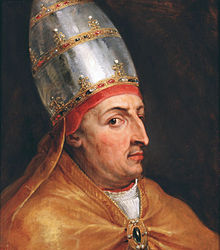
“We grant you [Kings of Spain and Portugal] by these present documents, with our Apostolic Authority, full and free permission to invade, search out, capture, and subjugate the Saracens and pagans and any other unbelievers and enemies of Christ wherever they may be, as well as their kingdoms, duchies, counties, principalities, and other property […] and to reduce their persons into perpetual servitude.”
These clearly refers to the lands along the coast of West Africa. By these decree, Pope Nicholas V conceded to the King of Portugal Afonso V and Prince Henry and all their successors, all their conquests of Africa, and reduction to perpetual servitude of all people deemed non-believers and enemies of Christ, and all their properties.
A significant subsequent concession given by Nicholas V in a brief issued to King Alfonso in 1454 extended the rights granted to existing territories to all those that might be taken in the future. Together with a second reference to some who have already been enslaved, this has been used to suggest that Nicholas sanctioned the purchase of black slaves from “the infidel”: “… many Guineamen and other negroes, taken by force, and some by barter of unprohibited articles, or by other lawful contract of purchase, have been … converted to the Catholic faith, and it is hoped, by the help of divine mercy, that if such progress be continued with them, either those peoples will be converted to the faith or at least the souls of many of them will be gained for Christ.”
This bull is currently conserved at the Institute of the National Archives of Torre do Tomba in Lisboa, Portugal, under the reference PT/TT/BUL/0007/29 and is fully translated to French in the book “le Péché du pape contre l’Afrique” (The Sin of the Pope against Africa) (éd. Al qalam, Paris, 2002) de Assani Fassassi, P. 10 – 21.
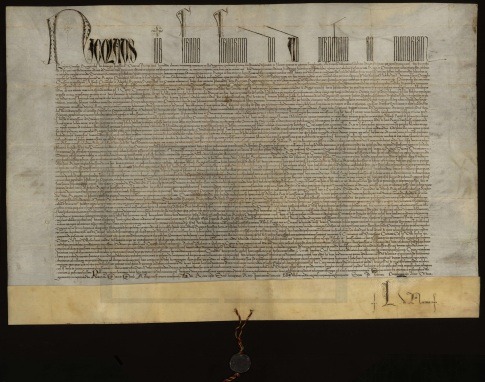
#catholics and slavery#pope nicholas v#dum diversas#Dum Diversas or The Vatican’s Authorization of Slavery#who started slavery of Africans#Enslaved Africans#catholic church is paying Reparations#Reparations
68 notes
·
View notes
Text









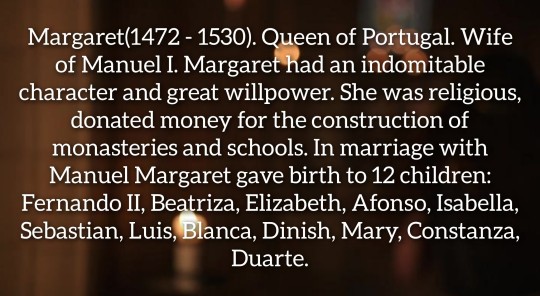
AU House of York: Children Edward IV and Elizabeth Woodville.
Elizabeth(1466 - 1520). Queen of France. Wife of Louis XII and mother of 10 children: Charles IX, Mary, Elizabeth, Louis, Madeleine, Jean, Guillaume, Philip, Jeanne and Bonne. Although their marriage was arranged for political reasons, it turned out to be a successful one. Elizabeth had no political influence as queen. She also devoted much attention to the education and upbringing of her children.
Mary(1467 - 1523). Queen of Denmark. Wife of Frederick I. Mary, as her older sister, was not interested in politics. The married life of Mary and Frederick was a happy one. He loved her for the fact that she did not interfere in his state affairs. They became the parents of 7 children: Christian III, Frederick II, Hans, Dorothea, Elisabeth, Dietrich and Anne.
Cecily(1469 - 1529). Queen of Scots. Wife of James IV, mother of 4 children: Marjorie, Anabella, Sibylla, Robert IV. The married life of the royal couple was not a happy one. Because of Jacob's constant infidelities, the couple became more and more distant from each other. The queen tried to influence the king's policy, but her attempts were unsuccessful.
Edward V(1470 - 1537). King of England. Husband of Isabella of Aragon. Edward's domestic and foreign policies were not successful. During his reign, nepotism and treasury increased in England, and he intervened in military conflicts of other countries. Isabella and Edward had a cool relationship. The marriage produced 5 children: Jacquetta, William IV, Isabella, Thomas and Henry.
Margaret(1472 - 1530). Queen of Portugal. Wife of Manuel I. Margaret had an indomitable character and great willpower. She was religious, donated money for the construction of monasteries and schools. In marriage with Manuel Margaret gave birth to 12 children: Fernando II, Beatriza, Elizabeth, Afonso, Isabella, Sebastian, Luis, Blanca, Dinish, Mary, Constanza, Duarte.
AU: Дети Эдуарда IV и Елизаветы Вудвилл.
Елизавета(1466 - 1520). Королева Франции. Жена Людовика XII и мать 10 детей: Карл IX, Мария, Елизавета, Людовик, Мадлен, Жан, Гильом, Филипп, Жанна и Бонна. Несмотря на то, что их брак был заключён по политическим соображениям, он оказался удачным. Елизавета не имела никакого политического влияния как королева. Также она уделял много внимая образованию и воспитанию своих детей.
Мария(1467 - 1523). Королева Дании. Жена Фредерика I. Марию, как её старшую сестру, не интересовала политика. Супружеская жизнь Марии и Фредерика была счастливой. Он полюбил её за то, что она не вмешивалась в его государственные дела. Они стали родителями 7 детей: Кристиан III, Фредерик II, Ганс, Доротея, Елизавета, Дитрих и Анна.
Сесилия(1469 - 1529). Королева Шотландии. Жена Якова IV, мать 4 детей: Марджори, Анабелла, Сибилла, Роберт IV. Супружеская жизнь королевской четы была не счастливой. Из-за постоянных измен Якова, супруги все дальше и дальше отдалялись друг от друга. Королева пыталась в влиять на политику короля, но её попытки остались без успешны.
Эдуард V(1470 - 1537). Король Англии. Муж Изабеллы Арагонской. Внутренняя и внешняя политика Эдуарда была не удачной. При его правлении в Англии увеличилось кумовство и казнокрадство, а также он вмешивался в военные конфликты других стран. У Изабеллы и Эдуарда были прохладные отношения. В браке родилось 5 детей: Жакетта, Вильгельм IV, Изабелла, Томас и Генрих.
Маргарита(1472 - 1530). Королева Португалии. Жена Мануэля I. У Маргарет был несгибаемый характер и большая сила воли. Была религиозна, жертвовала деньги на строительство монастырей и школ. В браке с Мануэлем Маргарита родила 12 детей: Фернанду II, Беатриса, Елизавета, Афонсу, Изабелла, Себастьян, Луиш, Бланка, Диниш, Мария, Констанса, Дуарте.
Part 1.
#history#history au#royal family#royalty#british royalty#british royal family#british#history of england#english history#england#english#house of york#au#elizabeth of york#the white princess#the white queen
13 notes
·
View notes
Text
Our Contestants
1: Maria Leopoldina of Austria, First Empress of Brazil
2 Dona Maria I of Portugal
3: Dona Maria II of Portugal
4: Isabel, Princess Imperial of Brazil
5 Carlota Joaquina de Bourbon
6: João I, Duke of Bragança
7 João IV, King of Portugal
8: Afonso I, Duke of Bragança
9: Fernando I, Duke of Bragança
10: Jaime I, Duke of Bragança
11: Teodósio I, Duke of Bragança
12: Teodósio II, Duke of Bragança
13: Afonso VI of Portugal
14 Pedro II of Portugal
15: João V of Portugal
16: João VI of Portugal
17: Pedro II of Portual
18 Pedro I of Brazil/ IV of Portugal
19: Miguel I of Portugal
20: Pedro V of Portugal
21: Luís I of Portugal
22: Carlos I of Portugal
23: Manuel II of Portugal
24 Dom Pedro II of Brazil
25: Teresa Cristina, Empress of Brazil.
26: Catherine de Bragança, Queen Consort of England, Scotland, and Ireland
27: Infante Dom Manuel, Candidate for the throne of Poland
28: José I of Portugal
29: Carol II of Romania (Carlos II in Portuguese)
30: Ferdinand I of Romania
31: Infantá Antonia de Bragança, Princess Consort of Hohenzollern
32: Amélie of Leuchtenberg
33: Infanta Isabel Maria, Regent of Portugal
34: Mariana Vitória of Spain, Queen Consort of Portugal
35: Maria Francisca of Savoy (Consort to Afonso VI and Pedro II)
36: Maria Pia of Savoy (Queen-Consort to Luís I of Portugal)
7 notes
·
View notes
Text

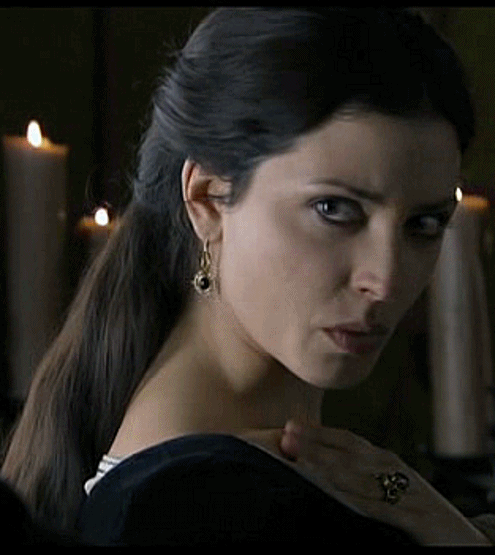

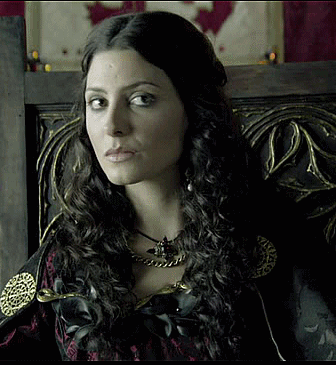
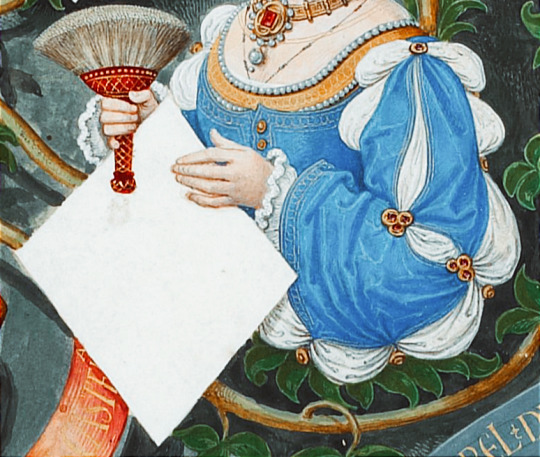
Juana of Portugal (1439-1475)
She was the posthumous daughter of King Duarte of Portugal and his wife Leonor of Aragon. Juana grew up in exile with her mother, due to the intrigues of the Portuguese court, and lived first at the Monastery of Santa María in Medina del Campo and later in Toledo, where Leonor of Aragon died. At the age of six, Juana returned to the Portuguese court of her brother Afonso V.
In 1455 the young Juana married her cousin Enrique IV of Castile, who had repudiated his first consort after thirteen years of marriage. The couple produced no children. The marriage was annulled on the grounds of an impotence that was specific rather than general, an impotence that applied only to Enrique’s relationship with Blanca of Navarre. Yet such an extraordinary explanation amounted to a case of maleficium (spell), with the clear implication that Blanca was the guilty party, and in addition she was obliged to leave Castile and return to Navarre.

Juana of Portugal was described as beautiful, cheerful and coquettish. The sources speak of the licentiousness introduced by the young Queen and her ladies in the austere Castilian court. They liked to use perfums, makeups, dresses that displayed too much décolletage, and flirting with men. One of her ladies, Guiomar de Castro, was King’s mistress, causing the anger of the Queen, and other, Mencía de Lemos, was Cardinal Mendoza’s mistress.
Six years after her wedding, Queen Juana was pregnant. Some say it was a miracle, others that it was the result of some sort of artificial insemination that the couple had tried, as was recorded by a german traveler. During this period, Juana insisted that Enrique's teenaged brother and sister, Alfonso and Isabel, forcefully be brought to the court and away from their sick mother. Many saw this as a way of making sure her daughter's path to the crown would encounter no obstacles. The Queen gave birth to a daughter named Juana, officially proclaimed heir to the Crown of Castile and created Princess of Asturias.
Queen Juana planned the marriage between her sister-in-law, Isabel of Castile, and her brother Afonso V of Portugal, and her daughter with her nephew Prince Joao. She wanted with these weddings an annexation of the Crown of Castile with the kingdom of Portugal.
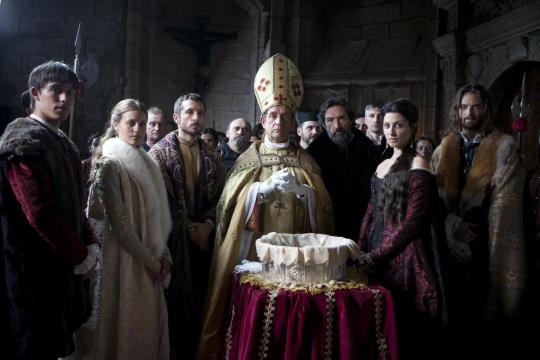
In early 1460s, Castilian nobles became dissatisfied with the rule of Enrique IV, and believed that Princess Juana was not King’s daughter. They called her la Beltraneja, a mocking reference to her supposed illegitimacy. Propaganda and rumour encouraged by the league of rebellious nobles argued that her father was Beltrán de la Cueva, a royal favorite of low background who had been elevated to enormous power by Enrique and who, by some, has been suggested as Enrique's lover.
Many nobles refused to recognise Princess Juana and preferred that Enrique instead name his younger half-brother, Alfonso as his heir. This was agreed to on the condition that Alfonso marries little Juana. Not long after this, Enrique reneged on his promise and began to support his daughter's claim once more. The nobles in league against him conducted a ceremonial deposition-in-effigy of Enrique outside the city of Avila and crowned Alfonso as a rival king.
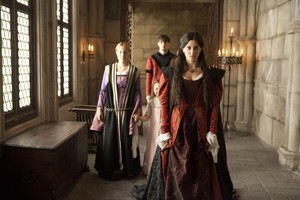
Queen Juana and her daughter were removed from the court. They lived in various castles as hostages, separately or together, protected by a faction of the nobility. The love affair of Queen Juana with the Bishop Fonseca’s nephew, Pedro of Castile, and the birth of her two illegitimate sons, caused great scandal. As a result of the need to conceal the pregnancy of her illegitimate sons, Juana of Portugal is considered the inventor of the farthingale.
In 1468, Alfonso of Castile died and Princess Juana was stripped of her succession-rights. Her aunt, Infanta Isabel, was placed before her, on condition that Isabel marry a man chosen out by the monarch. Queen Juana and her daughter sent a formal appeal to the Supreme Pontiff. Enrique accepted to divorce his wife and send her to Portugal, but Juana remained in Castile as king's wife, though separated of her husband. Isabel married Fernando of Aragon with the opposition of Enrique IV.
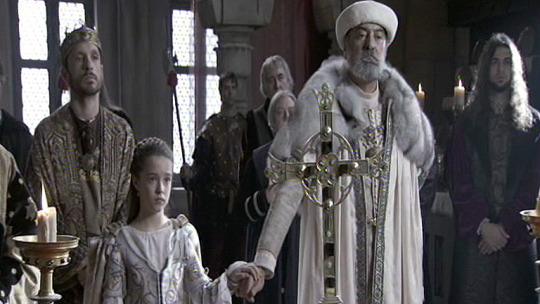
In 1470, Princess Juana was engaged and then married by proxy to the Duke of Guienne, brother of Louis XI of France. In the face of the French ambassador, King Enrique and Queen Juana swore before a crucifix that the Princess was their legitimate daughter. The French marriage never consummated, because the duke died two years later in France. Queen Juana always defended her daughter’s rights to the throne, and she had an active political participation. Queen Juana tried to get the support of nobles and cities, but with meager success and without palpable results. In 1474, Enrique IV died at the Alcázar of Madrid and rumors circulated that the late monarch had been poisoned, his wife and his daughter demanded an investigation. Queen Juana died a few months after her husband’s death at the age of 36. In the last months of her life, she lived at the convent of San Francisco in Madrid. The cause of her death is unknown.
Bárbara Lennie played Juana of Portugal in TV series "Isabel"
#juana de portugal#juana de avis#joan of portugal#women in history#spanish history#barbara lennie#Isabel tve#enrique IV#juana la beltranejs#juana de trastamara#juana de castilla
27 notes
·
View notes
Note
Well now I'm sad (about the paintings). Were they destroyed on purpose during battles and such, or was it normal decay?
two things, technically three
Eathrquakes being number one. I use the plural here because it wasn't just the 1755 one. That one was the strongest, but not the only one. In 1630, for example, Lisbon suffered a terrible earthquake that caused enough destruction. I believe that one was an estimated 7 or something on Richter scale
The second reason was Napoleonic invasions. And here is where ti divides into two reasons, because both the french and the english stole a lot of shit. I vividly remember asking my prof which did he think caused more destruction/disappearance of artoworks overall, the earthquake or the invasions, and he considered it for a while and came to the conclusion that it was both. We know for a fact that the french stole a lot of works from monasteries mostly. But the english did so to. They vandalised a lot of stuff, and a lot of paintings disappeared. We had Van Der Weydens in the country that vanished, and we know they existed because we have every documentation (sometimes even drawing reproductions) except the painting.
It would also justify why Portugal seemingly has no paintings of its kings and queens before John I, and even after that, until Manuel I it's like paintings of kings and quees are a rarity. Which does not make sense. Leonor, wife of John II, would have a court painting sent to her cousin Maximillian, emperor of the holy roman empire or whatever it was called. But we have exactly two depictions left of her, both as a widow, one in a painting and one on a mural. Before her, only Isabella of Portugal, Duchess of burgundy, and Philippa of Lancaster have paintings, though the latter is in illuminated manuscripts mostly. Also Infanta Santa Joana. And as for kings, we have of John I, King Duarte (ARGUABLY BUT I'M NOT GETTING INTO IT), Afonso V and some other infantas. Many of them illuminated manuscripts too.
To quote my professor, who was honestly one of the best profs I had, "I bet my ass there's a painting of an unknown lady somewhere in the Louvre's reservoirs that is Queen Leonor"
#the 1755 earthquake was also the most advertised#because it had significance in the enlightnment era#and caused a significant shift in europe regarding schools of thought
9 notes
·
View notes
Text
Events 9.4 (before 1930)
476 – Romulus Augustulus is deposed when Odoacer proclaims himself "King of Italy", thus ending the Western Roman Empire. 626 – Li Shimin, posthumously known as Emperor Taizong of Tang, assumes the throne over the Tang dynasty of China. 929 – Battle of Lenzen: Slavic forces (the Redarii and the Obotrites) are defeated by a Saxon army near the fortified stronghold of Lenzen in Brandenburg. 1260 – The Sienese Ghibellines, supported by the forces of Manfred, King of Sicily, defeat the Florentine Guelphs at Montaperti. 1282 – Peter III of Aragon becomes the King of Sicily. 1479 – The Treaty of Alcáçovas is signed by the Catholic Monarchs of Castile and Aragon on one side and Afonso V and his son, Prince John of Portugal. 1607 – The Flight of the Earls takes place in Ireland. 1666 – In London, England, the most destructive damage from the Great Fire occurs. 1774 – New Caledonia is first sighted by Europeans, during the second voyage of Captain James Cook. 1781 – Los Angeles is founded as El Pueblo de Nuestra Señora La Reina de los Ángeles (The Village of Our Lady, the Queen of the Angels) by 44 Spanish settlers. 1797 – Coup of 18 Fructidor in France. 1800 – The French garrison in Valletta surrenders to British troops who had been called at the invitation of the Maltese. The islands of Malta and Gozo become the Malta Protectorate. 1812 – War of 1812: The Siege of Fort Harrison begins when the fort is set on fire. 1827 – The Great Fire of Turku almost completely destroys Finland's former capital city. 1839 – Battle of Kowloon: British vessels open fire on Chinese war junks enforcing a food sales embargo on the British community in China in the first armed conflict of the First Opium War. 1862 – American Civil War Maryland Campaign: General Robert E. Lee takes the Army of Northern Virginia, and the war, into the North. 1870 – Emperor Napoleon III of France is deposed and the Third Republic is declared. 1882 – The Pearl Street Station in New York City becomes the first power plant to supply electricity to paying customers. 1886 – American Indian Wars: After almost 30 years of fighting, Apache leader Geronimo, with his remaining warriors, surrenders to General Nelson Miles in Arizona. 1888 – George Eastman registers the trademark Kodak and receives a patent for his camera that uses roll film. 1912 – Albanian rebels succeed in their revolt when the Ottoman Empire agrees to fulfill their demands 1919 – Mustafa Kemal Atatürk, who founded the Republic of Turkey, gathers a congress in Sivas to make decisions as to the future of Anatolia and Thrace. 1923 – Maiden flight of the first U.S. airship, the USS Shenandoah.
0 notes
Text
Berlengas, a trip to the islands
The Berlengas Natural Reserve, off Peniche, is one of the best places for diving and birdwatching in Portugal.
The confluence of the Mediterranean and Atlantic climates created a unique ecosystem in the world with characteristic fauna and flora, together with a geomorphology distinct from that of the European continent, in the Berlengas Islands.
Biological wealth is priceless. The fauna and flora are unique, which makes Berlengas a biological heritage of high conservation interest. Recognized since 1465, in a letter from King D. Afonso V – “in the Berlengas of the sea no one goes hunting”, the archipelago is the first protected area in the country, for over 30 years a Natural Reserve, and recognized by🏛️UNESCO🏛️since 2011 .
To visit the Berlengas islands – or, better, to go to Berlenga Grande, the largest island in this archipelago – you need to take a boat in Peniche. You will also find on land, in Peniche, different means of maritime transport to access Berlengas. The trip lasts about 30 minutes, but considering the view and landscape ahead, you won't even notice the time passing by.
When you start to approach the Berlengas archipelago, the first view is of a pile of rocks and rocks, which seem to be unattractive and touristy. But just get off the boat and start walking around the island to quickly understand the magic of this place that mixes absolutely paradisiacal beaches with majestic rocks. This archipelago is made up of three islets (Berlenga Grande, Estelas and Farilhões-Forcadas), the first being the largest and the one that deserves a more in-depth visit.
instagram
0 notes
Text
there's always King Afonso's Terrible Lion:

(pictured here with afonso v of portugal, and looking very little like a lion.)


are there more examples of ugly animals like this in medieval art?
945 notes
·
View notes
Text





Royal Birthdays for today, January 15th:
Afonso V, King of Portugal, 1432
Margaret of Connaught, Crown Princess of Sweden, 1882
Saud bin Abdulaziz Al Saud, King of Saudi Arabia, 1902
Marie Christine, Princess Michael of Kent, 1945
Philip, Prince of Yugoslavia, 1982
Alexander, Prince of Yugoslavia, 1982
#afonso v#Margaret of Connaught#Saud bin Abdulaziz Al Saud#princess michael#prince alexander#prince philip#long live the queue#royal birthdays
11 notes
·
View notes
Text
12th King of Portugal (3rd of the Aviz Dynasty), King Afonso V of Portugal, “The African”
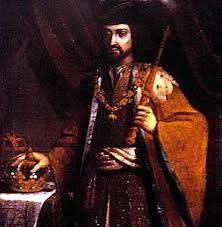
Reign: 13 September 1438 – 28 August 1481 Acclamation: 15 January 1446 Predecessor: Duarte I
Afonso V (15 January 1432 – 28 August 1481), known by the sobriquet the African (o Africano), was King of Portugal. His sobriquet refers to his conquests in Northern Africa.
As of 1471, Afonso V was the first king of Portugal to claim dominion over a plural "Kingdom of the Algarves", instead of the singular "Kingdom of the Algarve". Territories added to the Portuguese crown lands in North Africa during the 15th century came to be referred to as possessions of the Kingdom of the Algarve (now a region of southern Portugal), not the Kingdom of Portugal. The "Algarves" then were considered to be the southern Portuguese territories on both sides of the Strait of Gibraltar.

Afonso was born in Sintra, the second son of King Duarte of Portugal by his wife Leonor of Aragon. Following the death of his older brother, Infante João (1429-1433), Afonso acceded to the position of heir apparent and was made the first Prince of Portugal by his father, who sought to emulate the English Court's custom of a dynastic title that distinguished the heir apparent from the other children of the monarch. He was only six years old when he succeeded his father in 1438.
During his minority, Afonso V was placed under the regency of his mother in accordance with a will of his late father. As both a foreigner and a woman, the queen was not a popular choice for regent. Opposition rose and without any important ally among the Portuguese aristocracy other than Afonso, Count of Barcelos, the illegitimate half brother of King Duarte, the queen's position was untenable. In 1439, the Portuguese Cortes (assembly of the kingdom) decided to replace the queen with Pedro, Duke of Coimbra (Dom Pedro), the young king's oldest uncle.
Pedro's main policies were concerned with restricting the political power of the great noble houses and expanding the powers of the crown. The country prospered under his rule, but not peacefully, as his laws interfered with the ambition of powerful nobles. The count of Barcelos, a personal enemy of the Duke of Coimbra (despite being half-brothers) eventually became the king's favourite uncle and began a constant struggle for power. In 1442, the king made Afonso the first Duke of Braganza. With this title and its lands, he became the most powerful man in Portugal and one of the richest men in Europe. To secure his position as regent, Pedro had Afonso marry his daughter, Isabel of Coimbra, in 1445.
But on 9 June 1448, when the king came of age, Pedro had to surrender his power to Afonso V. The years of conspiracy by the Duke of Braganza finally came to a head. On 15 September of the same year, Afonso V nullified all the laws and edicts approved under the regency. In the following year, led by what were later discovered to be false accusations, Afonso declared Pedro a rebel and defeated his army in the Battle of Alfarrobeira,
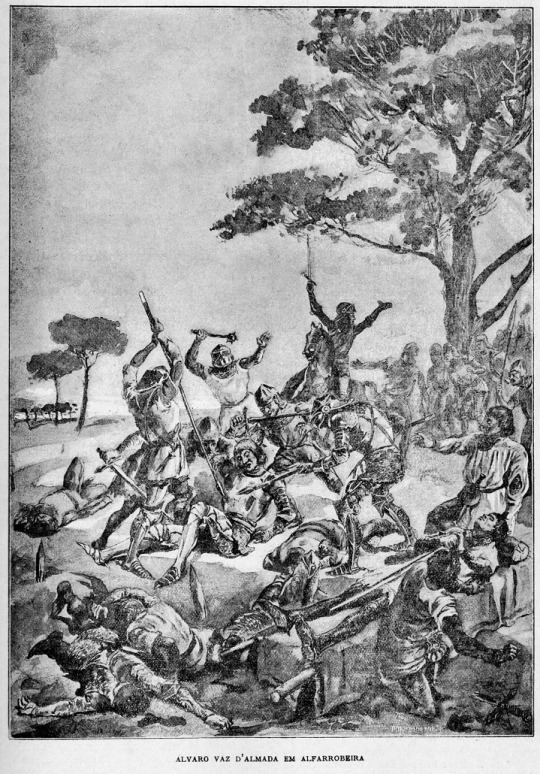
in which his uncle (and father-in-law) was killed. After this battle and the loss of one of Portugal's most remarkable infantes, the Duke of Bragança became the de facto ruler of the country.

Afonso V then turned his attentions to North Africa. In the reign of his grandfather João I, Ceuta had been conquered from the king of Morocco, and now the new king wanted to expand the conquests. The king's army conquered Alcácer Ceguer in 1458 and Arzila in 1471.
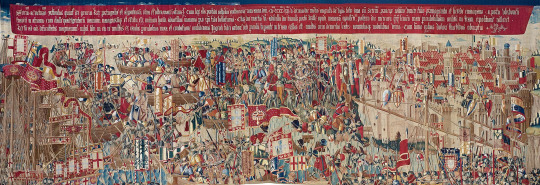
Tangiers, on the other hand, was won and lost several times between 1460 and 1464. These achievements granted the king the nickname of the African or Africano.
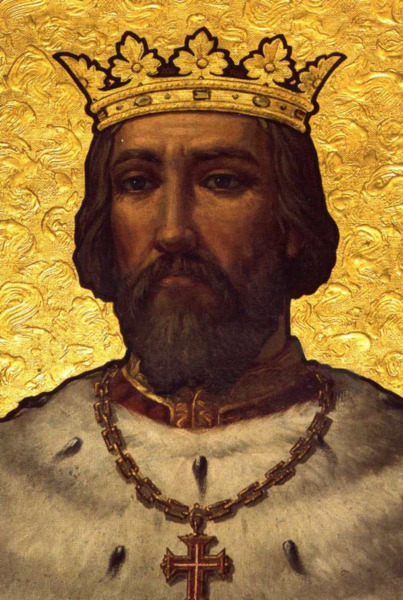
The king also supported the exploration of the Atlantic Ocean led by prince Henrique the Navigator but after Henrique's death in 1460, he did nothing to continue Henrique's work. Administratively, Afonso V was a passive king. He chose not to pursue the revision of laws or development of commerce, preferring instead to preserve the legacy of his father Duarte and grandfather João I.
In 1452, Pope Nicholas V issued the papal bull Dum Diversas, which granted Afonso V the right to reduce "Saracens, pagans and any other unbelievers" to hereditary slavery. This was reaffirmed and extended in the Romanus Pontifex bull of 1455 (also by Nicholas V). These papal bulls came to be seen by some as a justification for the subsequent era of slave trade and European colonialism.

When the campaigns in Africa were over, Afonso V found new grounds for battle in neighboring Castile. On December 11, 1474 King Henry IV of Castile
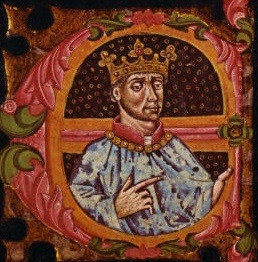
died without a male heir, leaving just one daughter, Joanna la Beltraneja.
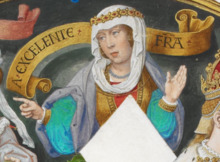
However, her paternity was questioned; it was rumored that his wife, Queen Joana of Portugal
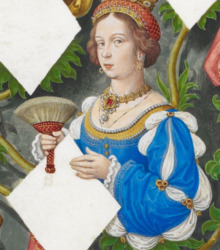
had an affair with a nobleman named Beltrán de La Cueva.
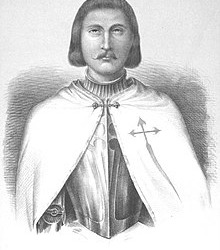
The death of Henry ignited a war of succession with one faction supporting Joana and the other supporting Isabel, Henry's half-sister.
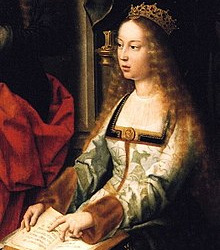
Afonso V was persuaded to intervene on behalf of Joana, his niece. He betrothed himself to her, proclaimed himself king of Castile and led troops into the kingdom. Because of their close blood-relationship, a formal marriage had to wait for papal dispensation.
On May 12, 1475, Afonso entered Castile with an army of 5,600 cavalry and 14,000 foot soldiers. In March, 1476, after several skirmishes and much maneuvering, the 8, 000 men of Afonso and Prince João,
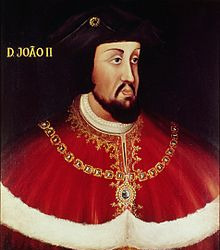
faced a Castilian force of similar size in the battle of Toro.
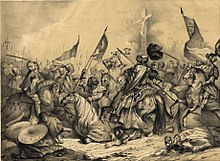
The Castilians were led by Isabella's husband, Prince Fernando II of Aragon
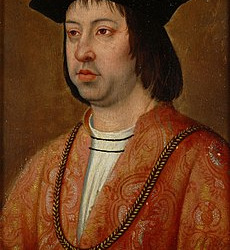
Cardinal Mendoza and the Duke of Alba. The fight was fierce and confusing but the result was a stalemate: While the forces of Cardinal Mendoza and the Duke of Alba won over their opponents led by the Portuguese King –who left the battlefield to take refuge in Castronuño, the troops commanded by Prince João defeated and persecuted the troops of the Castilian right wing, recovered the Portuguese royal standard, remaining ordered in the battlefield where they collected the fugitives of Afonso. Both sides claimed victory but Afonso's prospects for obtaining the Castilian crown were severely damaged.
“It was March 1, 1476. Eight thousand men for each side, the chronicles tell. With Afonso of Portugal were his son João and the bishops of Evora and Toledo. With Fernando of Aragón, Cardinal Mendoza and the Duke of Alba, as well as the militias of Zamora, Ciudad Rodrigo and Valladolid. The battle was long, but not especially bloody: it is estimated that the casualties of each side did not reach a thousand. Who won? In reality, no one: Afonso's wing of Portugal fell under the thrust of Fernando, but Prince João's troops crushed their Castilian rivals. However, victory in this battle was not going to be military, but ... political. In fact, Fernando of Aragon, seeing that the clash concluded without winners or losers, hastened to give his own version of the facts. He sent letters to all the cities of Castile and Aragon and to several European courts.”
After the battle, Afonso sailed to France hoping to obtain the assistance of King Louis XI

in his fight against Castile. But finding himself deceived by the French monarch, he returned to Portugal in 1477. Disillusioned, he abdicated for a few days in November 1477 in favor of his son João II, then after returning to the throne, he retired to a monastery in Sintra, where he died in 1481. He rests with his first wife Queen Isabel of Coimbra in the Founder’s Chapel, inside the Monastery of Batalha.
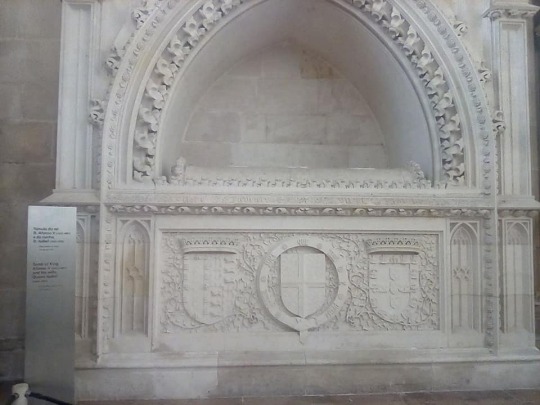
Afonso married firstly, in 1447, Isabel of Coimbra, with whom he had three children:
João, Prince of Portugal (29 January 1451). He his buried in the Unfinished Chapels in the Monastery of Batalha next to his grandparents King Duarte of Portugal and Queen Leonor de Aragão.

Joana, Princess of Portugal (6 February 1452 – 12 May 1490): Known as Saint Joana of Portugal or Saint Joana Princess.
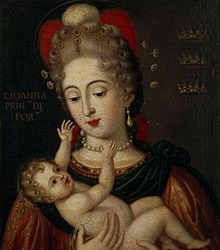
João II of Portugal (3 March 1455 – 25 October 1495): Succeeded his father as 13th King of Portugal.
Afonso married secondly, in 1475, his niece Joanna of Castile, known as "La Beltraneja".
7 notes
·
View notes
Photo

Infanta Isabel of Coimbra (1 March 1432 – 2 December 1455) was a Portuguese infanta and Queen of Portugal as the first spouse of King Afonso V of Portugal.
2 notes
·
View notes
Text
Portugal-Spain: Nine centuries of summits
[Translation of the sidebar historical timeline from this article. Article translation here]
__
History shows that there is nothing more untrue than the proverb “no good wind or wedding comes from Spain”: the tiffs simply prove that the Portuguese and Spanish share a lot more than the Iberian Peninsula’s soil.
Written by Rosa Ferreira
1096 – Alfonso VI, “Emperor of all Spain”, gives his daughter Teresa’s hand in marriage to Henry of Burgundy, and the County of Portucale along with it.
1143 – In the summit (“Conference”) of Zamora, Alfonso VII of Leon and Castile recognises his cousin Afonso Henriques as the king of an independent Portugal.
1297 – Through the Treaty of Alcanizes, Castile recognises Portugal’s borders, unchanged until today, with the exception of Olivença: they are the oldest in Europe.
1340 – Summit between Afonso IV of Portugal and Alfonso XI of Castile allows the formation (with Aragon) of an ample, shared Christian front which defeats the last Islamic offensive in the Iberian Peninsula in the battle of Salado.
1345-1355 – After the death of his wife, Pedro, the prince heir of Portugal, enters into a “de facto union” with the Galician Inês de Castro, daughter of a nobleman involved in the dynastic disputes of Castile. To avoid Portugal’s involvement in the conflict, Afonso IV condemns Inês to death. After the death of his father, Pedro I of Portugal makes an agreement with Pedro of Castile to obtain the extradition of the murderers, who had taken refuge in that kingdom, and avenges his beloved with nuances of wickedness. Coincidence: two kings called Pedro reigned in Portugal and Castile, and both became known to history as “the Cruel”.
1383 – The Treaty of Salvaterra de Magos: after three consecutive defeats, Fernando of Portugal gives up his rights to the Castilian crown and weds his daughter Beatriz to Juan I of Castile. The revolution of Lisbon and the war for independence follow, which culminate with Portuguese victory in Aljubarrota.
1494 – The Treaty of Tordesillas splits the undiscovered world between Portugal and Castile, with the agreement of Pope Alexander VI.
1498 – Manuel I and his wife Isabel (Prince Afonso’s widow) are recognised in the courts of Toledo as heirs to the crown of Castile. But Aragon’s courts refuse to accept the succession: the throne must go to a masculine heir. Everything seems to be solved with the birth of Miguel da Paz, son of the monarchs of Portugal. While his mother dies during labour, Miguel inherits both empires... but his death before he turns two “delivers” the Spanish crown to the future Emperor Charles V.
1576 - Meeting in Guadalupe. In this summit, Sebastian proposes to his cousin* Phillip II a joint attack against Morocco’s moors. Phillip refuses and tries to dissuade him from his African adventure. Faced with his cousin's stubbornness, he ends up helping him: many Spaniards died next to the Portuguese in the battle of Ksar el-Kebir (1578).
1580 – The Tomar courts acclaim Phillip II of Spain as Phillip I of Portugal. The new king promises to keep Portuguese laws and the autonomy of the Kingdom and Empire's administration, and pledges to only nominate Portuguese people for its government. He pays the ransom of most of the Portuguese nobles held captive in Morocco after the defeat of Ksar el-Kebir.
1640 – In response to the centralized politics of the Count-Duke of Olivares (Gaspar de Guzmán), prime minister of Phillip IV (III of Portugal), who wants to impose Castile's hegemony, a group of Portuguese nobles restores independence. The crown is given to the duke of Braganza, João IV. The attitude of his wife, the Spanish Luísa de Gusmão, served to end the duke's hesitations: “I'd rather die ruling than live serving”, she is reputed to have said.
1668 – Having lost the war, Spain recognizes, through the Treaty of Madrid, the independence of Portugal.
1706 – The Portuguese Army, commanded by the marquis of Minas, arrives triumphant in Madrid during the war of Spanish succession, and acclaims as king the candidate supported by Portugal, archduke Charles of Austria. Less than a year later, the Portuguese leave the battle of Almansa defeated, and the Spanish crown goes to the grandson of Louis XIV of France, Phillip V, who initiates the Bourbon dynasty.
1801 - “War of the Oranges”. The Spain of Carlos IV, backed by Napoleon's France, attacks Portugal, England's ally, and conquers Olivença. Despite the military and diplomatic turnarounds, with special attention to the Congress of Vienna in 1815, which recognized Portugal's sovereignty over the territory, Spain did not return Olivença.
1807 – Invasion of Portugal by a French army to which Spain allowed passage. The Portuguese royal family flee to Brazil. There, the Spanish princess Carlota Joaquina, wife of João VI, tries unsuccessfully to become queen of the Spanish colonies of South America.
1820 – Liberal revolutions in Spain and Portugal. The next year, king João VI, Carlota Joaquina and prince Miguel return to Lisbon, and in 1822 the first Portuguese Constitution is approved, very much inspired by the 1812 Spanish one.
1823 – Counterrevolution in Portugal (Vilafrancada) and in Spain (French intervention brings down the liberal government.) The constitutional regime is suspended and absolutism returns to both countries' monarchies.
1834 – Former king Pedro IV of Portugal and former emperor of Brazil wins the civil war for the liberals and leaves the throne to his daughter, Maria II, as constitutional Queen. The campaigns of the “freedom army” were financed by the Spanish merchant Juan de Mendizábal.
1847 – Spanish army intervention in Portugal, by request of the Portuguese chartist government, to dominate the Patuleia revolt (which followed the Maria da Fonte revolt).
1868 – In the sequence of the revolution that expelled from Madrid the Queen Isabel II, the new power offers the Spanish crown to Fernando II of Portugal (widower of Maria II and father of king Luís I). Prudent and well warned, the “artist king” refuses.
1908 – 1916 – Alfonso XIII of Spain, who held the dream of Iberian hegemony since the regicide, acts towards an intervention regarding the instability of the Portuguese Republic proclaimed in 1910. But he doesn't dare act when faced with British intransigence, which considers any interference inadmissible. Portugal's entry in WWI on the Allied side ends any pretension of such.
1942 – Seville summit between Salazar and Franco. The nationalistic victory in the 1936-1939 Civil War owed much to the Portuguese Regime's support but, in full German euphoria during the Second World War, Francoism grew bigger. In the following years, the cold war was the “family allowance” of the two authoritarian regimes of the peninsula, as the 1949 summit proved, when Franco came to Lisbon.
__
.
.
T/N: * Philip II was actually Sebastian’s uncle, not cousin.
#history#ref#it sure is interesting seeing how many times the portuguese tried to take over the rest of the peninsula lol#'and i would have done it too if it hadn't been for those meddling aragonese/suspicious deaths'#those complicated neighbours#anyway i wondered if i should link so much but like#i personally like reading every related thing and others might like it too#none of this is my own wording i just translated it
18 notes
·
View notes
Text
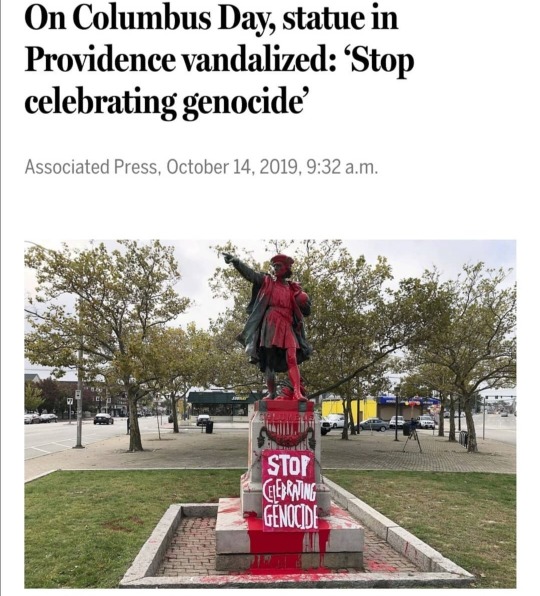
“Cancel culture” is nothing new, so why are we acting like it is? Those in power have written their own version of history as they’d like it to be remembered for ages. That “winners write history” is simply another way of saying that selective erasure (or canceling) of inconvenient truths is built into the fabric of documenting history.
What’s new is that now we’re looking backward to “uncancel” some of the important stories not widely shared about groups of people who have more power today than they’ve had in the past to record their truths for a broader audience.
An exemple is how has been washed, cleaned and packed up, the figure of Christopher Columbus in history books and mainstream european culture.
Some facts that you must know about Christopher Columbus:
- Christopher Columbus didn't discover America as a continent, and wasn't aslo the first European to visit American coasts: half a millennium before Columbus “discovered” America, Viking's feet may have been the first European ones to ever have touched North American soil. The expedition’s leader was Leif Eriksson (variations of his last name include Erickson, Ericson, Erikson, Ericsson and Eiriksson), son of Erik the Red, who founded the first European settlement of Greenland after being expelled from Iceland around A.D. 985 for killing a neighbor. (Erik the Red’s father, himself, had been banished from Norway for committing manslaughter.)
But Christopher Columbus was remarkably the first who came with the intention of a great military conquer.
- He didn't discover that the Earth is spherical: this knowledge was still accepted in the Middle Age and by the Christian doctrine.
Knowledge of the sphericity of the Earth survived into the medieval corpus of knowledge by direct transmission of the texts of Greek antiquity (Aristotle), and via authors such as Isidore of Seville and Beda Venerabilis.
Though the earliest written mention of a spherical Earth comes from ancient Greek sources, there is no account of how the sphericity of the Earth was discovered.
A recent study of medieval concepts of the sphericity of the Earth noted that since the eighth century, no cosmographer worthy of note has called into question the sphericity of the Earth.
Some examples are the papers of Pope Silvester II, who was awer of the knowledge of ancient greek philosophers and also of the researches of Muslim mathematicians. Also Saint Hildegard portrayed the Earth as a sphere in her Liber Divinorum Operum; Giovanni Sarabosco, an Italian astronomist wrote a paper (Tractatus de Spahaera) based on the knowledge of Ptolemy about the sphericity of the Earth; Honorius of Autun, a theologist very popular also in lay community,in his Elucidarium, a survey of Christian beliefs wrote about the sphericity of the Earth. His works was translated frequently into other languages.
Another proof that this knowledge was diffused also in the low folk and not only among the intellectuals of the Church, can be found in some of Berthold von Regensburg homelies in which he explained that the earth is spherical.
A practical demonstration of Earth's sphericity was achieved by Ferdinand Magellan and Juan Sebastián Elcano's expedition's circumnavigation (1519-1522).
- Christopher Columbus was the first European to have the idea to enslave native Americans and force them to work in colonizer's encomiendas. According to Cuneo, Columbus ordered 1,500 men and women seized, letting 400 go and condemning 500 to be sent to Spain, and another 600 to be enslaved by Spanish men remaining on the island. About 200 of the 500 sent to Spain died on the voyage, and were thrown by the Spanish into the Atlantic. (Bergreen, 196-197)
Those left behind were forced to search for gold in mines and work on plantations. Within 60 years after Columbus landed, only a few hundred of what may have been 250,000 Taino were left on their island.
- If you think that Christopher Columbus was loved and admired by people of his age, you are wrong: he gave land to the settlers and permitted the enslavement of the Taino people to work it. Complaints for his violence against Caribs and Taino Indians, but mostly for his cruelty against Spanish settler, trickled back to Spain, and eventually the monarchs sent a commissioner to investigate. Shocked by conditions at the colony, the commissioner arrested Columbus and his brothers and sent them back to Spain for trial. The brothers were released by the king and queen, but Columbus was removed from his position as governor of Hispaniola.
- Christopher Columbus was the fist European to commit a genocide: 56 years after Columbus's first voyage, only 500 out of 300,000 Indians remained on Hispaniola.
Population figures from 500 years ago are necessarily imprecise, but Bergreen estimates that there were about 300,000 inhabitants of Hispaniola in 1492. Between 1494 and 1496, 100,000 died, half due to mass suicide. In 1508, the population was down to 60,000. By 1548, it was estimated to be only 500.
Some important facts about slavery, Catholic Church and the famous Monarchs of Spain, Isabel of Castile and her husband Ferdinand of Aragon:
In 1492, Kingdom of Castile and Aragon had a disperate need of money: King Ferdinand and his wife Qeen Isabel used a lot of money in their wars against Portogual and their Conquer of the Emirate of Granada, that was an indipendente Muslim state at the age. They were deeply in debt, also with jews pawloaner, who at the age, were the only allowed to borrow money (Christian doctrine, by the way, didn't allow it), so they wrote the infamous Alhambra Decree with witch all jews were forced to left Spain and their properties passed in the Monarchs' hands.
I red some people associated the Dum Diversas with Columbus, but it has nothing to concern with "discovery" of the "new world": Dum Diversas is a papal bull issued on 18 June 1452 by Pope Nicholas V. It authorized Afonso V of Portugal to conquer Saracens and pagans and consign them to "perpetual servitude". It was referred to the muslim population of North Africa and also to the Turkish territories in Europe.
By the way, the Catholic Chruch condamed slavery in various occasion: in 1537 pope Paul III condemned "unjust" enslavement of non-Christians in Sublimus Dei. In 1686 the Holy Office limited the bull by decreeing that Africans enslaved by unjust wars should be freed. Eugene IV and Paul III did not hesitate to condemn the forced servitude of Blacks and Indians, in Sicut Dudum (1435) and in Sublimis Deus (1537). Their teaching was continued by Gregory XIV in 1591 and by Urban VIII in 1639. Except those formal condemn of slavery, the Church keep an ambiguous sentiment: the condamn was absolute, but most of the government of their age were built on slavery and keep allow their people to profit on slavery, for the reason that "indigenous" people were not Christians, they didn't have a soul, so they were like animals. The Holy See was unable to stop the trade, despite their good intentions.
The pontifical teaching was continued by the response of the Holy Office on March 20, 1686, under Innocent XI, and by the encyclical of Benedict XIV, Immensa Pastorum, on December 20, 1741. This work was followed by the efforts of Pius VII at the Congress of Vienna in 1815 to have the victors over Napoleon outlaw slavery. The 1839 Constitution In Supremo by Gregory XVI continued the antislavery teaching of his predecessors, and was in the same manner not accepted by many of those bishops, priests and laity for whom it was written.
#us history#american history#history#christopher columbus#columbus day#indigenous peoples day#indigenous peoples of the americas#indigenous people's day: bay area led the change#indigenous people&039;s day#kingdom of spain#colonial history#colonialism#vavuskapakage#cancel culture#slavery#genocide#crimes against humanity#leif erickson day#leif erikson
23 notes
·
View notes
Text
Introduction
Do you have opinions on the Serene House of Bragança (or Braganza) Do you wish to join the Brigantine Dynasty as it streches from East Timor to Brazil. Do you wish to eat Caldo Verde in a hot day in Portugal. Do you enjoy seeing drama, plotting, consorts more interesting than their Bragança husbands and the glory that is coming to Brazil? If so this defunct house of rulers that has had claimants and candidates to the thrones of Greece and Poland, as well as Monarchs of Portugal and royal consorts that have provided Monarchs such as Ferdinand of Romania? Dilettantes including the Infante Manuel de Bragança? and of course the Glorious Kings of Portugal and the Emperors of Brazil? If so, come to Brazil Join the tournament to discover the best Bragança!
Listen we may not be as dramatic as the Habsburgs or the Bourbons, but in terms of drama, we are the little house that could (so much drama (the War of the Brothers, the scheming of Carlota Joaquina, João V and his strong love of the catholic church)
Rules:
Who will be included in your lists? Much like notable brackets of Central Europe, we will include unconventional figures who may technically be considered members of other dynasties including *sighs*...at least a few Hohenzollerns (But unlike the @best-hohenzollern-ruler bracket, these will be ROMANIAN HOHENZOLLERNS; which is better).
We will also include the consorts from other royal families whose ambitions, intellect, and force of will may have outshone their admittedly mediocre Bragança spouses (Carlota Joaquina of the Bourbons is fascinating as is Maria Leopoldina of Austria)
Is propaganda encouraged?
Absolutely, as Lilia Schwarcz shows for Pedro II of Brazil, propaganda and pageantry are essential for the construction of the Bragança dynasty and monarchy! As such, It is also essential for this bracket!
Why is everyone a Pedro or João?
Hey, those are perfectly good names....but we also have two Marias who reigned in their own right (Actually, a lot more Marias in this bracket!) We also have some Afonsos
What regnal numbers will you be using?
Honestly, we will be using the Portuguese regnal numbers up until Pedro II of Brazil, who will have emperor in his title to distinguish him (Pedro I of Brazil/ IV of Portugal will have both)/ We will also include a few dukes.
Which language will you be using for the names?
Portuguese....do you really want to deal with a bunch of Johns and Peters?
How would you like it if, say a Habsburg Bracket, called Franz Joseph
Francisco José? It would be weird.
What is your relation to @best-hohenzollern-ruler, @best-habsburg-monarch, and the @best-bourbon-monarch?
Much like the Duke João of Braganza ( the future King João IV of Portugal) we bravely broke off from the @best-habsburg-monarch's bracket to form our own path! However, as is our want, we deeply appreciate the Habsburgs, the Bourbons, and the Hohenzollerns. Thus, we have maintained our propensity to intermarry into each of these families and their membership has joined us as well. So @best-hohenzollern-ruler @best-bourbon-monarch and @best-habsburg-monarch, friends? Also, @rulers-of-poland-tournament, Infante Manuel de Bragança really thinks y'all are swell!
10 notes
·
View notes